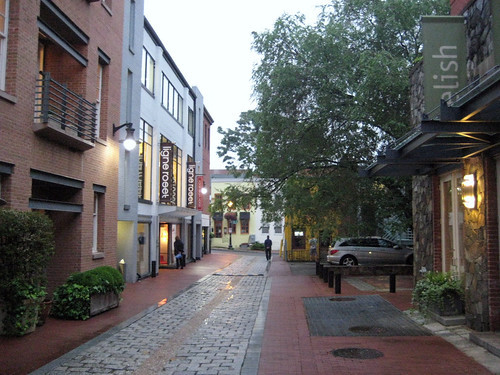'Maximizing urban cores' vitality and infrastructure must be the basis for any definition of sustainability'

Posted August 23, 2010 at 1:02PM
There’s a terrific article on cnn.com titled “Green Buildings Won’t Save the Planet,” written by architects Joshua Prince-Ramus, Randolph Croxton, and Tuomas Toivonen. It states in broad, manifesto-like strokes the same concept I was trying to illustrate in my post last week on “net zero” Prairie Ridge Estates in Illinois: ‘green’ isn’t always what it appears, and seldom is when it involves sprawl. Some excerpts from the new article:
“The American building-design community's vision of sustainability is myopically focused on increasing the energy efficiency and reducing the embodied carbon of individual buildings. So-called 'green' buildings are simply not sustainable if, for example:
- Their occupants drive long distances every day.
- The energy they consume is carbon-intensive.
- Their technology is too complicated to use or too difficult to maintain.
- Their impact stops at the property line.
- They deny the use of pre-existing infrastructure or building fabric.
- They are conceived in isolation from larger, systemic environmental change . . .
“Only by changing behavior -- particularly suburban sprawl and its accompanying carbon intensive lifestyle -- can the United States reach ecological balance.
“Strategies for maximizing the potential of our urban cores' existing vitality and infrastructure must be the basis for any definition of sustainability.
“In short, we must make the most of what we already have. We must overcome the growing perception that new ‘green’ is our salvation [emphasis mine] . . .
“Updating and/or adaptively reusing existing buildings close to the infrastructure our nation has built over the last 100 years is often far more sustainable than constructing new ‘green’ buildings in the suburbs (or even downtown) . . .
“The following strategies can effectively incentivize U.S. growth and migration to move toward more dense and diverse cities, while simultaneously enriching natural resources:
- Establish growth boundaries between city and nature that allow both to reach their full potential . . .
- Create regional and nationwide marketplaces that allow rural and suburban landowners outside growth boundaries to transfer their development rights to areas where urban growth is desirable . . .
- Develop a national ecological balance plan that steers development at the scale of buildings, infrastructure and ecosystem services through a comprehensive framework of guidelines and indicators.
- Devise a quantitative indicator that analyzes and coordinates population density, programmatic diversity and low-carbon travel. This metric would provide policy makers, planners, developers and citizens with a common understanding of the underlying patterns that shape their community's carbon footprint, and inform consensus-driven systemic action, such as the drawing of growth boundaries.
- Develop new types of urban structures that, by design, can adapt to a rich variety of unanticipated uses and accommodate new construction technologies as they evolve . . .”
Applause, please. The whole article is well worth reading and taking to heart.
To be clear, NRDC strongly supports green technology and green buildings, and so do I. My former colleague Rob Watson has been honored as "the father of LEED" and deserves tons of credit for his work creating standards and incentives for efficient and resource-conserving buildings. Many of my colleagues at NRDC and the US Green Building Council are still on the case, and we should all be glad of it. I'm also not entirely comfortable with the authors' unabashed vocabulary of "behavior" modification. Especially given market and demographic trends, I see much of our task as making it easier to satisfy demand, and taking advantage of opportunity in disinvested urban cores and town centers, rather than changing people.
But the authors have emphasized something fundamental that more environmentalists - including Al Gore, if he's still around somewhere - need to grasp: technology can help, but only if it is part of a more holistic approach that includes land use, equity, and a lot more. Technology can even hurt if it lulls us to sleep, dreaming that sprawl is just fine if it's "green" sprawl. It isn't fine, and let's be real about that.
Back to the article, there is also a TED video on the site showing part of a lecture by Joshua Prince-Ramus discussing his firm’s design for an immensely flexible theater in Dallas. Curiously, it seems unrelated to urban cores, adaptive reuse, development patterns or even green architecture (in other words, the subjects of the article), but it is still interesting if you are an architecture junkie.
Move your cursor over the images for credit information.
Thanks to Ken Firestone for the link to the article.


